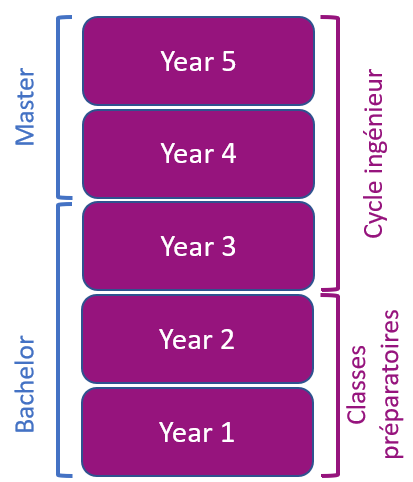Number of hours
- Lectures 15.0
- Projects -
- Tutorials -
- Internship -
- Laboratory works -
ECTS
ECTS 0.0
Goal(s)
“Modeling and Simulation Techniques for RF System Design”
• To be able to make the connection between mathematical expressions (Maxwell's equations) and the use of commercial CAD RF software.
• To be able to plot, represent with figures expressions that describe physical properties such as wave propagation, EM radiation from antennas.
• To be able to use the main functions available in the common computational software (MATLAB) to address electromagnetic problems. Develop basic knowledge on MATLAB to solve partial differential equations that can be find in electromagnetic problems.
• To be able to provide theoretical elements of comparison through the implementation of various numerical methods (finite differences, method of moment, finite elements ...).
• To be able to show limitations (2D geometry problem, 2½ D, 3D, computation time, memory ...) that can result from using one method over another, that is to say, one commercial software compared to another. Allow students to choose the good way to solve EM problems.
• To be able to correctly use commercial EM simulators (Ansoft Designer & HFSS).
Etienne PERRET
Content(s)
Keywords: RF simulators and RF modeling, numerical methods for microwave devices, Finite Differences, Method of Moments, Finite elements, Practical use of a RF simulation software
• Fundamental concepts
• RF simulators
• Analytical Methods
• Finite Differences Methods
• Variational Methods
• Method of Moments (MoM)
• Finite Elements Method.
• Practical implementation of RF simulation software
- Electromagnetic / Microwave Circuit *
Electromagnetics, Concepts in Radio Frequency transmission media, Guides and electromagnetic radiation, radio frequency circuits and systems, antennas - Mathematics *
Good knowledge in mathematics (linear algebra in particular) is required.
Scientific computing.
E1 = Final Exam 1 - 1H30, Undocumented, No calculator
E2 = Final Exam 2 - resit/rattrapage examination - 1H30, Undocumented, No calculator
TP = Lab
N1 = 50%E1 + 50%TP.
N2 = 50%E2 + 50%TP
The course exists in the following branches:
- Curriculum - EIS - Semester 9
- Curriculum - EIS (Apprenticeship) - Semester 9
Course ID : 5AMSC515
Course language(s): 
The course is attached to the following structures:
You can find this course among all other courses.
Sadiku M. N. O., “Numerical Techniques in Electromagnetics with MATLAB”, Third Edition, CRC Press, 2009.
Orfanidis S. J., “Electromagnetic Waves and Antennas”, Initially posted online in November 2002. Latest revision date - August 1, 2016, www.ece.rutgers.edu/~orfanidi/ewa.
Balanis C., “Advanced Engineering Electromagnetics”, 2nd Edition, John Wiley, 2012 – Chapitre 12.
Makarov S. N., “Antenna and EM Modeling with MATLAB”, Wiley, 2002.
Ney M., “Simulation électromagnétique, Outils de conception”, Techniques de l’ingénieur. Traité Électronique, E 1 030.
Gibson, “The method of moments in electromagnetics”, Chapman & Hall / CRC Press, 2007.
Elsherbeni A., Demir V., “The Finite Difference Time Domain Method for Electromagnetics: With MATLAB Simulations”, SciTech Publishing, 2009.
Jin J-M, Riley D. J., “Finite element analysis of antennas and arrays”, IEEE Press : Wiley, 2009.
Yu W., “Electromagnetic Simulation Techniques Based On The FDTD Method”, John Wiley & Sons, 2009.
Harrington R.F., “Fields computation by Moment Method”, New York IEEE Press, 1993.
Sullivan D., “Electromagnetic Simulation Using the FDTD Method”, IEEE Computer Society Press, 2000.
Lascaux P., « Analyse numérique matricielle appliquée à l'art de l'ingénieur », Dunod, 2004.
Euvrard D., « Résolution numérique des équations aux dérivées partielles - Différences Finies, Éléments Finis », MASSON.
Raviart P.-A., Thomas J.-M., « Introduction à l’analyse numérique des équations aux dérivées partielles », Dunod, 1ère édition, 2005.
What is a grande école ?
French engineering curriculum





